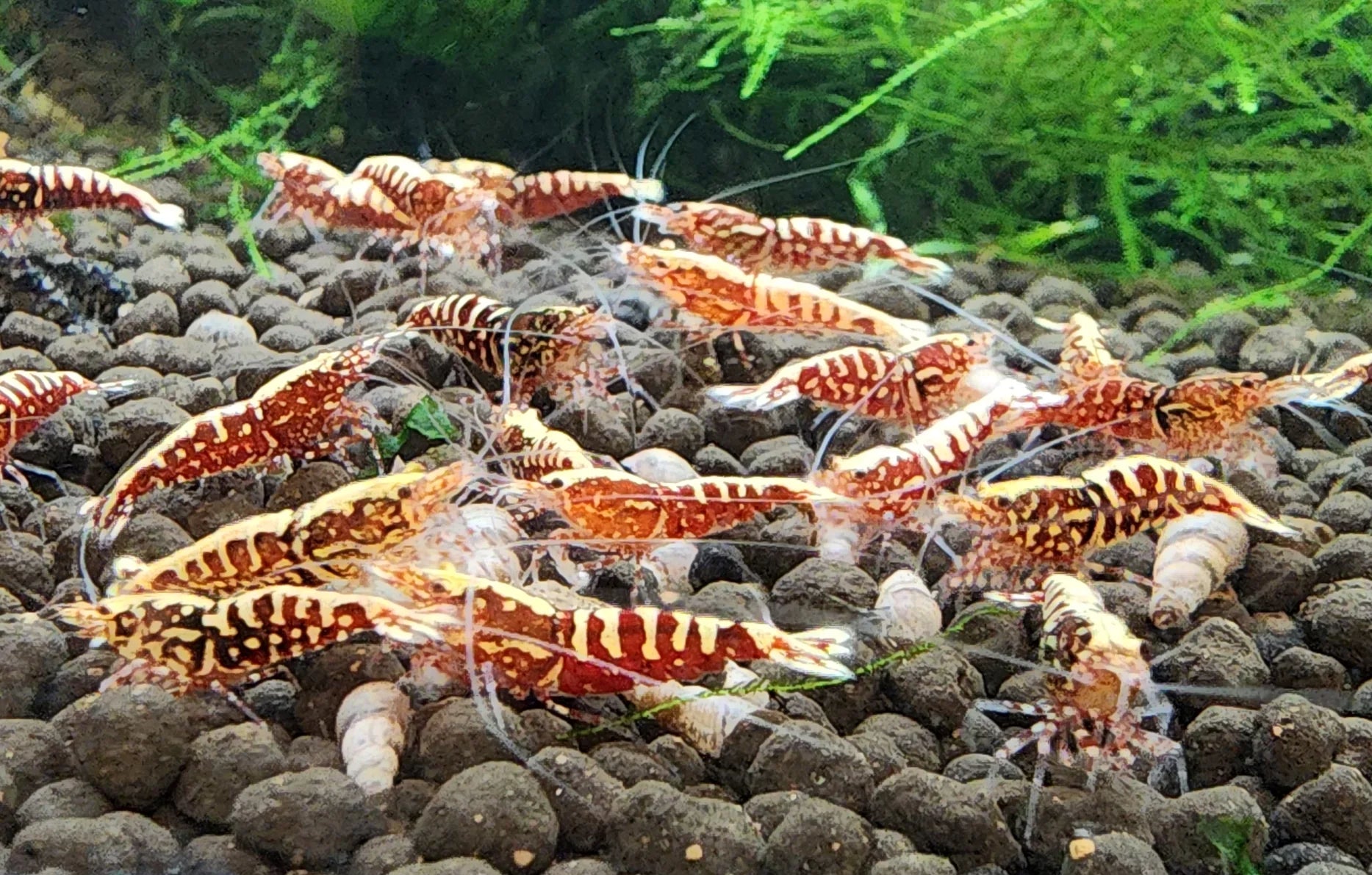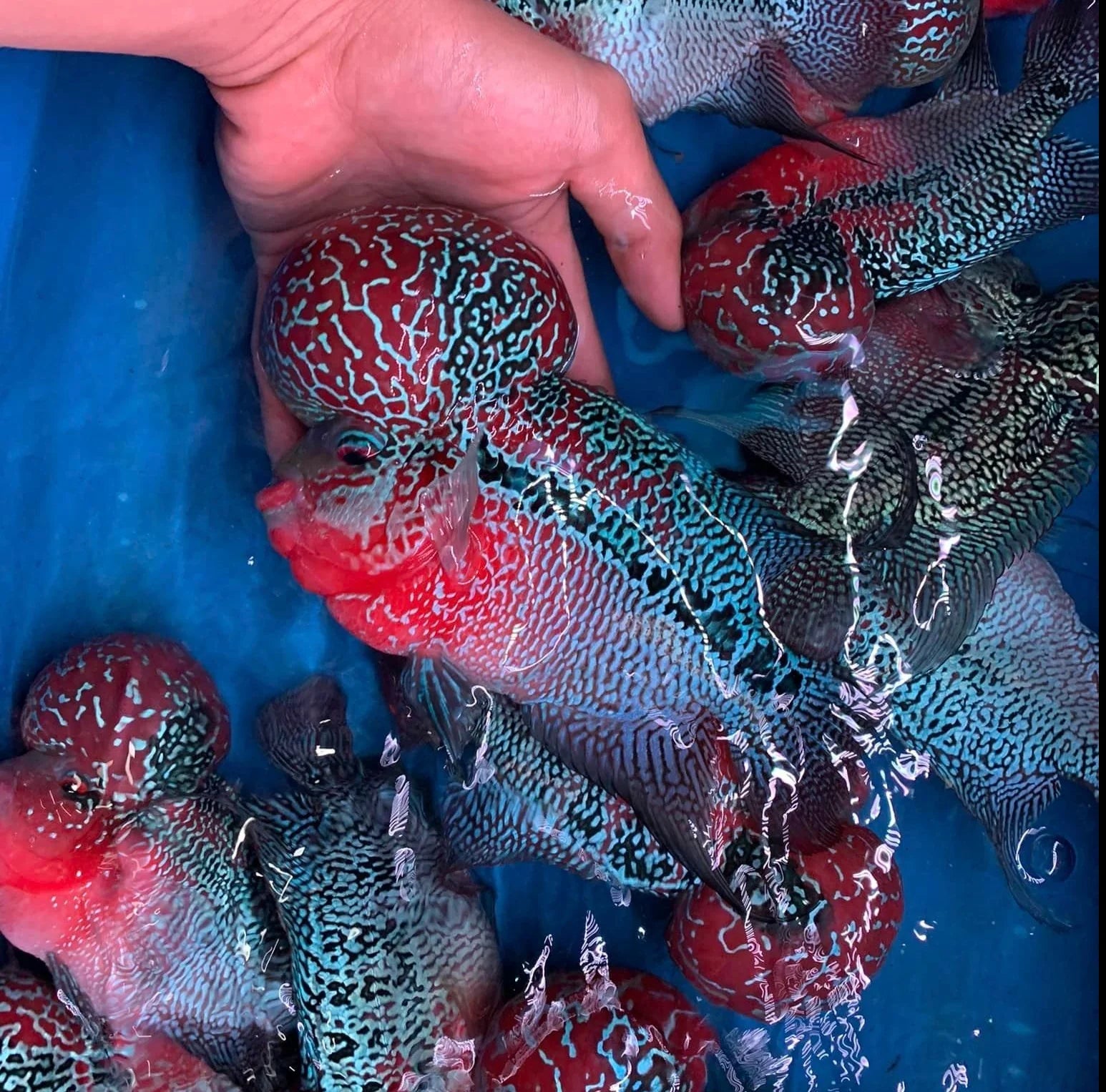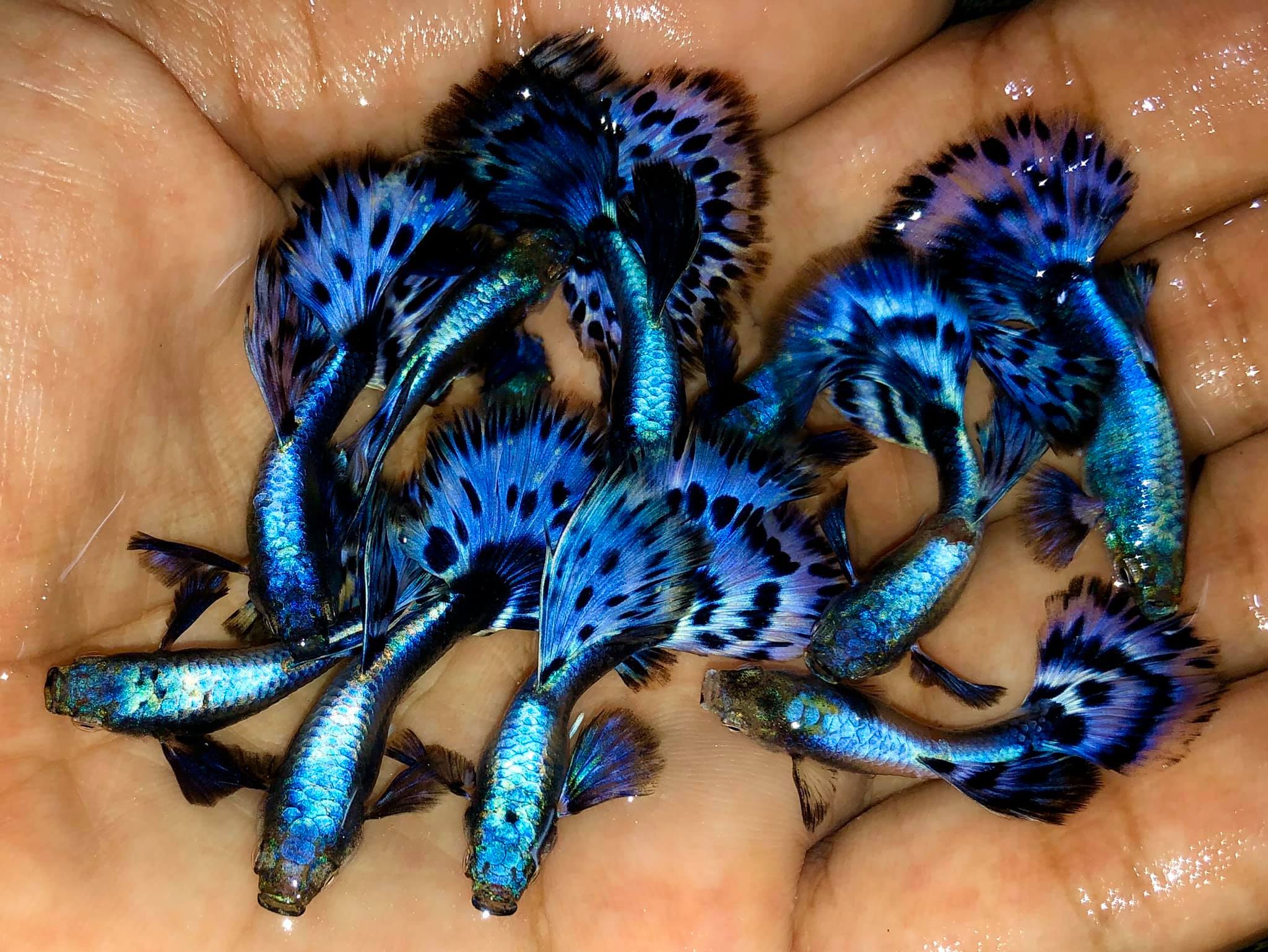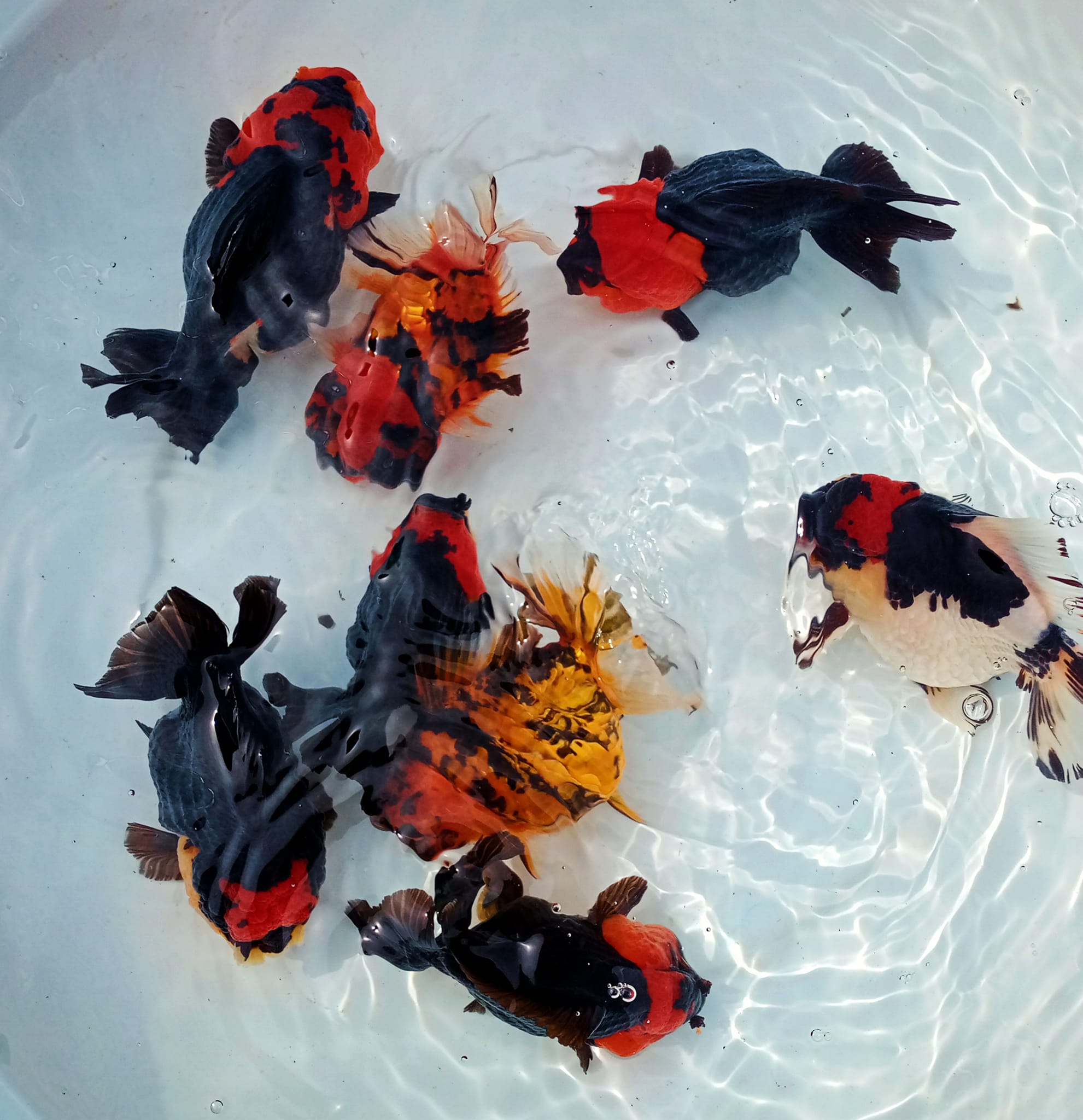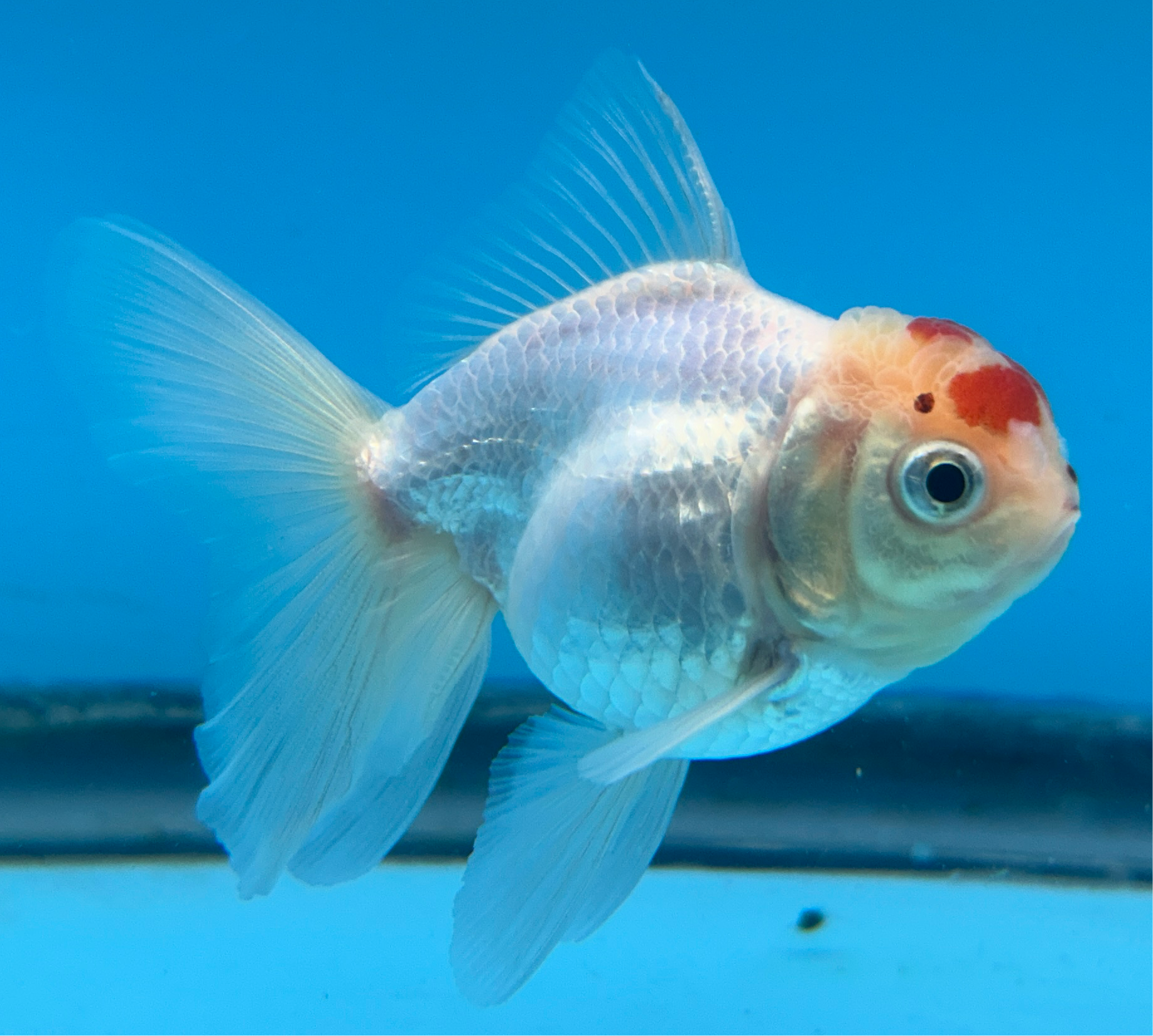
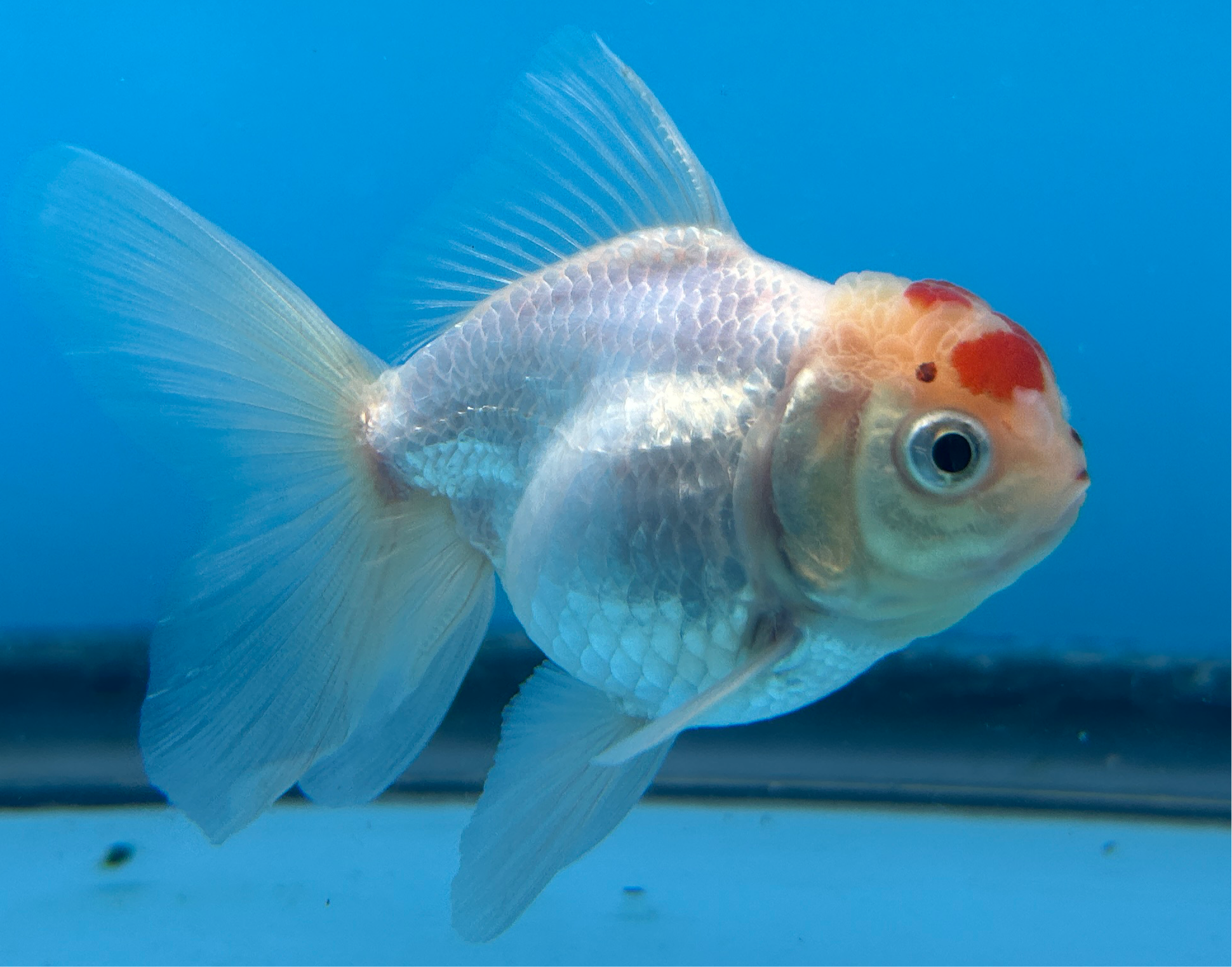
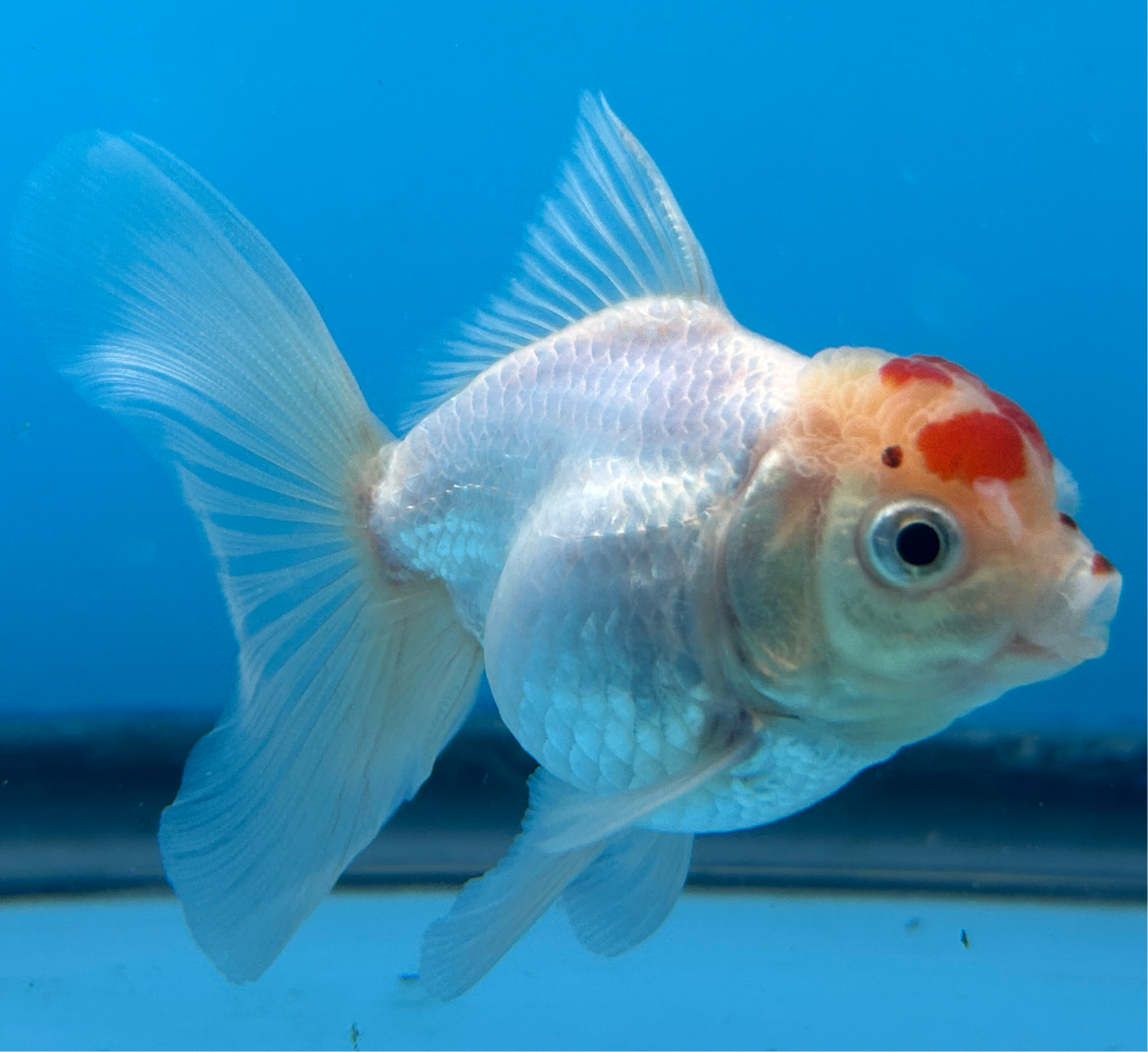
Thai Oranda Red & White Cap 2.5” Body Male 4 Months (JC-012)
Ready to Ship!
Choose Next Day Air Shipping or Two Day Shipping for a Live Arrival Guarantee. Enjoy fast, secure delivery straight to your door!
FAQ for Thai Oranda
-
What should I feed my Thai Oranda?
Feed your Thai Oranda a variety of high-quality goldfish pellets, flakes, and occasional live or frozen food such as bloodworms, daphnia, or brine shrimp. You can also feed blanched vegetables like peas, spinach, or zucchini to provide fiber and promote digestion. Feed 2-3 times a day, offering small portions they can consume in 2-3 minutes to avoid overfeeding. -
What is the ideal water temperature for my Thai Oranda?
Thai Orandas thrive in water temperatures between 68°F to 75°F (20°C to 24°C). Maintaining a consistent temperature is essential for reducing stress and encouraging optimal health. Use a heater with a thermometer to monitor and maintain the ideal temperature range. -
What size tank does a Thai Oranda need?
A 20-30 gallon tank is ideal for a single Thai Oranda. If you plan to keep more than one, a 40 gallon or larger tank is recommended to provide ample swimming space and prevent overcrowding. Ensure the tank has a high-quality filtration system for clean water. -
Can Thai Orandas be kept with other fish?
Yes, Thai Orandas are peaceful and can be kept with other calm goldfish species such as Ranchus, Lionchus, or other Orandas. Avoid keeping them with fast-swimming or aggressive fish that may cause stress. Suitable tank mates include other slow-moving fish of similar size. -
How do I care for the wen (head growth) on my Thai Oranda?
The wen on your Thai Oranda is a delicate feature that needs regular maintenance. Gently clean it with a soft sponge or toothbrush soaked in aquarium water. Keeping the water clean and stable promotes healthy wen growth and helps prevent fungal or bacterial infections. -
What are common health problems with Thai Orandas?
Like all goldfish, Thai Orandas are susceptible to conditions like swim bladder disease, Ich (white spot disease), and fin rot. Prevent these issues by:- Performing regular water changes (20-30% weekly)
- Maintaining stable water conditions (proper pH, ammonia, and nitrate levels)
- Offering a balanced diet and avoiding overfeeding
- Quarantining new fish for 2-3 weeks before adding them to your main tank
-
How should I acclimate my Thai Oranda to a new tank?
To acclimate your Thai Oranda, float the sealed bag in the tank for 15-20 minutes to equalize the water temperature. Gradually add small amounts of tank water to the bag over 30-60 minutes. Once the fish is fully acclimated, gently release it into the tank to minimize stress and shock. -
How long can my Thai Oranda live?
With proper care, Thai Orandas can live up to 10-15 years. Providing a clean tank, a varied diet, and good water quality will help ensure a long, healthy life. -
How fast will my Thai Oranda grow?
Thai Orandas typically grow at a rate of 1 inch per month during the first year. Full maturity is around 6-8 inches. Growth rates can vary depending on water quality, diet, and care. -
What are the distinctive features of the Thai Oranda?
The Thai Oranda is known for its striking black and white coloration, resembling a panda pattern. It has a round body and a prominent wen on its forehead, which develops and matures as the fish grows, giving it a unique and beautiful appearance. -
Can I breed my Thai Oranda?
Yes, breeding Thai Orandas is possible if you provide the right conditions. Set up a separate breeding tank with soft, spawning mops or plants where the fish can lay eggs. Maintain a water temperature of 72°F to 78°F (22°C to 25°C) to encourage spawning. Males will chase females during breeding season. Monitor and remove eggs if necessary to prevent them from being eaten by the parents. -
How do I prevent illness in my Thai Oranda?
To prevent illness:
- Perform regular water changes and maintain a clean tank
- Feed a balanced, high-quality diet
- Maintain stable water conditions (check pH, ammonia, nitrites, and nitrates regularly)
- Avoid overcrowding, as this can stress the fish and lead to disease If you notice signs of illness, such as abnormal swimming or loss of appetite, isolate the fish and seek treatment promptly.
Couldn't load pickup availability
Pickup currently unavailable at 3055 Wittman Way
Pairs well with
If you have any questions, you are always welcome to contact us. We'll get back to you as soon as possible, within 24 hours on weekdays.
-
Shipping Information
Direct From Farm Order: Fish and shrimp sourced directly from Thailand take a minimum of 2 weeks to import. After arrival, they undergo a 1-week quarantine to ensure health and quality before being shipped to customers.
What You See is What You Get: These are fish and shrimp already in our store. The exact specimens shown in the listing are what you will receive.
Processing & Shipping Time:
Packing time: 1–10 days depending on the health and condition of the livestock.
Shipments go out between Monday - Wednesday, and tracking information is provided once your order is shipped.
Packaging & Live Arrival Guarantee: We use insulated packaging with temperature control to ensure safe arrival. Live arrival is guaranteed—please review our DOA policy for details.
-
Customer Support
Customer Support
Order Inquiries:
For questions about your order status, tracking, or changes, please contact us at info@garageaquatics.com.Live Arrival Guarantee:
If you experience any issues with your shipment, including Dead on Arrival (DOA), please report it within 1 hour of delivery with clear photos.Returns & Refunds:
We do not accept returns on live animals. Refunds for DOA claims are issued as store credit only, based on our DOA policy. Please note that shipping costs are not refundable.General Assistance:
For care tips, acclimation guidance, or product recommendations, reach out via info@garageaquatics.com. Our team is happy to help!
Dear Customer
Welcome to Garage Aquatics, where passion meets quality! Our collage showcases the vibrant beauty of the fish and invertebrates we offer, all sourced from top breeders in Thailand. Whether you're a seasoned aquarist or just starting your journey, we take pride in providing healthy, high-quality aquatic life for your tanks.
Take a look at our collection and get inspired to create your own stunning underwater world! 🌿🐠✨
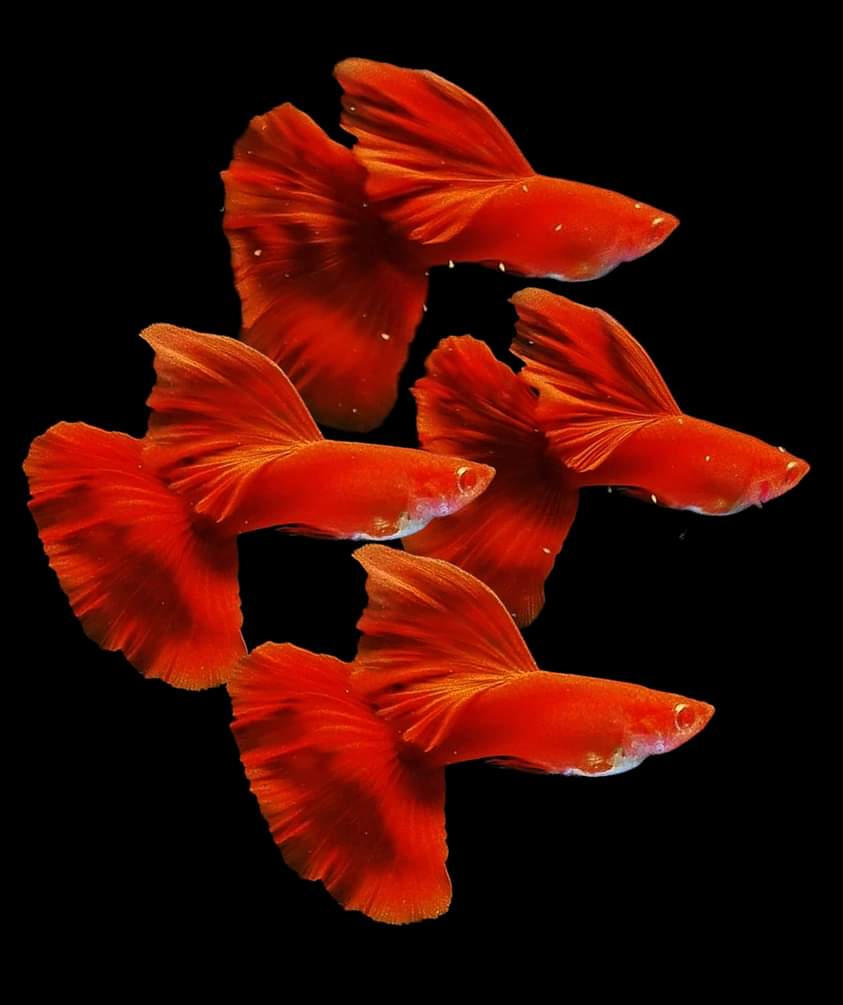
Shop with us
We will always provide communication, updates, and provide top quality fish and service
FAQs
Please read our FAQs page to find out more.
"What You See is What You Get" collection?
With our "What You See is What You Get" collection, you can view the exact fish you'll be receiving. Each fish is photographed individually, so you know exactly what you're purchasing before it arrives at your door.
Do you offer a live arrival guarantee?
Yes! We offer a 100% live arrival guarantee. Our fish are shipped directly from our collections with care, and we stand behind their quality. If your fish arrive in poor condition, please contact us within 24 hours with a photo, and we’ll provide a replacement or refund, as per our terms and conditions.
What is the Direct from Farm collection?
The Direct from Farm collection is our preorder system where you can select fish directly from our farm in Thailand. Because we carefully source each fish, this process takes a little longer—approximately 2 weeks for the fish to arrive from Thailand and another week for quarantine before being shipped to you. This ensures that your fish are healthy and acclimated before they reach your aquarium.
How do I care for my new fish once they arrive?
When your fish arrive, it’s important to acclimate them gradually to your tank’s water temperature. Ensure your aquarium is fully cycled and that water parameters (temperature, pH, ammonia, nitrite, and nitrate levels) are stable. If you need any tips on setting up your tank or caring for your fish, feel free to reach out!

